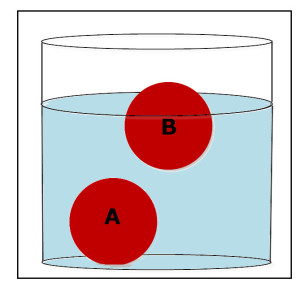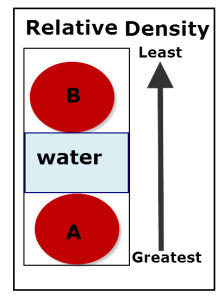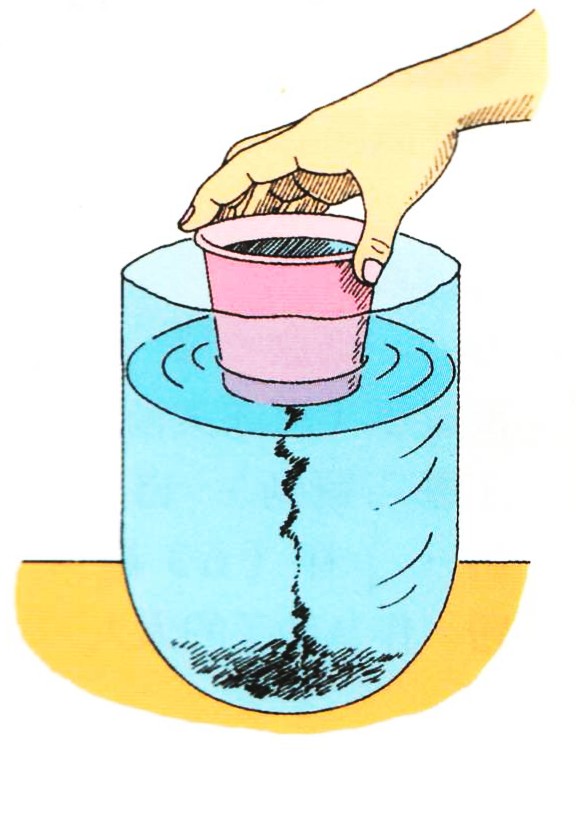 Density is a ratio of mass to volume.
Density is a ratio of mass to volume.
Relative density is a comparison of the density of two or more things.
For example: What is the relative density of the two balls and water in the diagram?
- Ball A sinks in the water, thus the density of ball A is greater than the density of water.
- Ball B floats in the water, thus the density of ball B is less than the density of water and less than the density of water.
The relative densities o f the balls and water from least density to greatest density is: Ball A; Water;Ball B. A model of the relative density of the two balls and water might look like the diagram shown:
f the balls and water from least density to greatest density is: Ball A; Water;Ball B. A model of the relative density of the two balls and water might look like the diagram shown:
Volume ? Temperature
The direct relation of volume to temperature is true for all stages of matter, gas, liquid or solid. This means the volume of matter increases as its temperature increases.
 The diagram exaggerates the volume changes, but it does model the direct relation of water volume and temperature. This means an increase in temperature results in an increase in water volume.
The diagram exaggerates the volume changes, but it does model the direct relation of water volume and temperature. This means an increase in temperature results in an increase in water volume.
Note: Temperature changes do not affect the mass of water. Thus the mass remains the same, but the volume increases as the temperature increase in temperature. To increase the volume, the molecules of water spread farther apart. To decrease the volume, the water molecules squeeze closer together.
Density is affected by the compactness of particles making up a material. The colder an object is, the more compact are its molecules, thus there is more mass per volume. In other words, cold material is more dense than if it were warm.
Cold ocean water is more dense than warmer ocean water. The cold ocean water at Earth’s poles sinks and moves toward the equator as the warm ocean water at the Earth’s equator rises and moves along the surface toward the poles. Bodies of water moving in a certain direction are called currents.
Density of salt water is greater than the density of fresh water. As the amount of salt in ocean water increases the greater is the density of the water. Thus, dense salty water sinks and less dense salty water rises producing density currents.
You can model the movement of dense salt water through fresh water.
Discover For Yourself
Procedure

1. Fill a small paper cup with tap water.
2. Add 2 tablespoons of table salt and 5 or more drops of food coloring to the cup. Stir until the salt dissolves.
3. Fill a transparent container about three-fourths full with water.
4. Hold the cup of colored salty water so that its bottom is just below the surface of the water in the container. In this place, push a pencil into the cup so that it punches a small hole in the bottom of the cup.
5. Remove the pencil and immediately observe the colored streaming out of the cup.
Results
A stream of colored water flows out of the cup and down toward the bottom of the container. The colored water settles along the bottom of the container. This happens because the density of the salt water is greater than the density of the tap water.
For more information about density, see:
(Paid Link)
